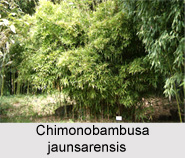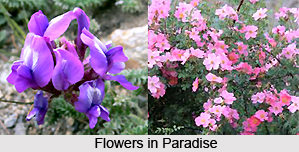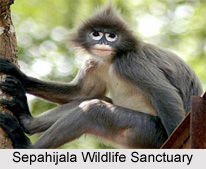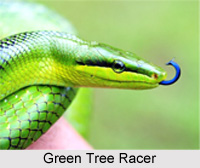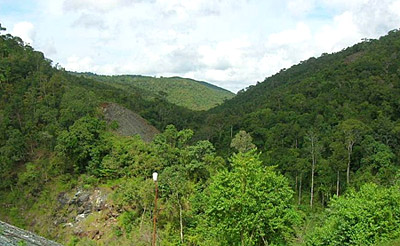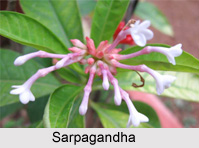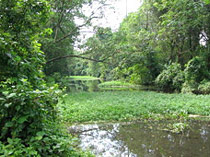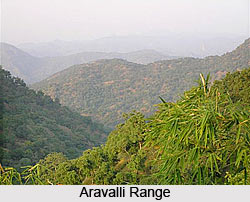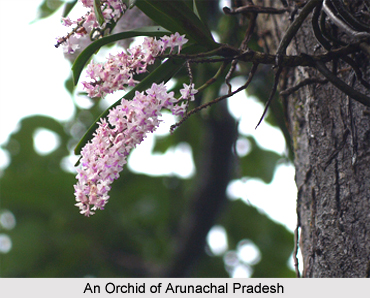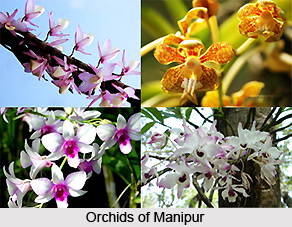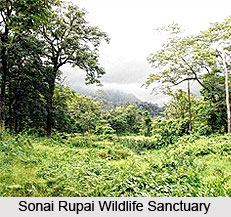 Sonai Rupai Wildlife Sanctuary, located in Sonitpur district of the Indian state of Assam, hosts a magnificent assortment of diverse wildlife. Spreading over a vast expanse of land along the foothills of the Great Himalayan range, the place is a perfect amalgam of vibrant natural resources and picturesque landscapes. It spans over a sprawling area of 175 square kilometres, it is famed for many endangered faunal species including the White Wood Duck. The region was declared as a sanctuary in the year 1998. The beautiful Burhidihing River traces its course through the sanctuary. Namchang River flowing from the state of Arunachal Pradesh enters this region and joins with Burhidihing River. The sanctuary enjoys a moist and rainy climate with high humidity.
Sonai Rupai Wildlife Sanctuary, located in Sonitpur district of the Indian state of Assam, hosts a magnificent assortment of diverse wildlife. Spreading over a vast expanse of land along the foothills of the Great Himalayan range, the place is a perfect amalgam of vibrant natural resources and picturesque landscapes. It spans over a sprawling area of 175 square kilometres, it is famed for many endangered faunal species including the White Wood Duck. The region was declared as a sanctuary in the year 1998. The beautiful Burhidihing River traces its course through the sanctuary. Namchang River flowing from the state of Arunachal Pradesh enters this region and joins with Burhidihing River. The sanctuary enjoys a moist and rainy climate with high humidity.
Flora of Sonai Rupai Wildlife Sanctuary
Flora of Sonai Rupai Wildlife Sanctuary mostly comprises evergreen forest. However grasslands are also common in this region.
Fauna of Sonai Rupai Wildlife Sanctuary
The major attractions of the sanctuary are formed by the Elephant and Indian Bison.
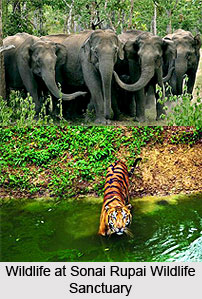 It is also the home to Deer and a plethora of other animals. Enthralling arrays of hill birds are also the inhabitants of the sanctuary. Big cats like Leopard, One-Horned Rhinoceros and Tiger can also be spotted here. Other fauna of the sanctuary constitutes reptiles like Russel`s Viper, Python etc and other animals like Barking Deer, Hog Deer, Lesser Cats, Wild Boar, Gaur and many more. Avifauna of Sonai Rupai Wildlife Sanctuary includes endangered species like White Winged Wood Duck. Other birds commonly found here are Woodpecker, Hill Myna, Indian Roller, Nightjar, Horned Owl, Black Headed Oriole, Minivet, Pelican, Hornbill and others. A number of migratory birds can also be spotted here.
It is also the home to Deer and a plethora of other animals. Enthralling arrays of hill birds are also the inhabitants of the sanctuary. Big cats like Leopard, One-Horned Rhinoceros and Tiger can also be spotted here. Other fauna of the sanctuary constitutes reptiles like Russel`s Viper, Python etc and other animals like Barking Deer, Hog Deer, Lesser Cats, Wild Boar, Gaur and many more. Avifauna of Sonai Rupai Wildlife Sanctuary includes endangered species like White Winged Wood Duck. Other birds commonly found here are Woodpecker, Hill Myna, Indian Roller, Nightjar, Horned Owl, Black Headed Oriole, Minivet, Pelican, Hornbill and others. A number of migratory birds can also be spotted here.
Visiting Information
The enticing natural beauty of Sonai Rupai Wildlife Sanctuary makes it an alluring tourist destination inviting people from distant regions. It is well connected through road, rail and air and is conveniently accessible to the tourists. Salonibari Airport, located at a distance of 10 kilometres from Tezpur, is the nearest airport. The nearest railway station to reach the sanctuary is at Rangapara, at a distance of 60 kilometres from Bhalukpong. Accommodation facilities are provided for the tourists at Tezpur. It can also be reached easily via road owing to its good connectivity with other parts of the country. The best time to visit the place is from November to March.
